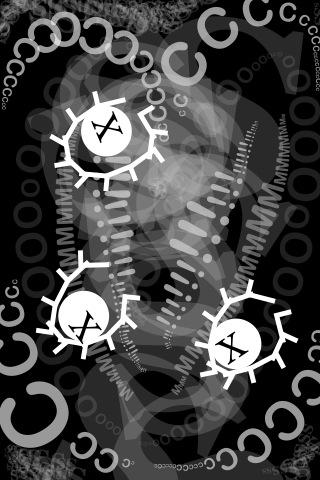Go offline with the Player FM app!
Episode 56: A story about language
Manage episode 158469024 series 1105768

artwork © Nico Vassilakis 2012
To engage in Critical Discourse Analysis (CDA), the linguistic methodology I discussed last week, requires understanding language primarily as a form of communication that can be manipulated to represent the world in different ways. Indeed, language is often understood as a form of communication that is unique to human beings, and linguists describe the specific ‘design features’ that make human languages different from forms of animal communication. (See George Yule’s textbook, The Study of Language, for a summary.)
I’ve said that my work differs slightly from CDA, one of these differences has to do with my particular take on language. For me, language is not first a foremost a form of communication. (Sperber and Wilson’s book on Relevance Theory is where that idea first sparked for me.) I see language instead as primarily a way of structuring information. And while human beings may be the only creatures who use this structuring device as a mechanism for communication, they are certainly not the only ones who have access to language. Drawing upon Alan Watts’s description of the earth ‘people-ing’, I paint a picture in which the earth has been structuring information for squillions of years, in the form of water molecules, single-celled organisms, mosses, DNA, etc. Human languages represent a new way of structuring information. Not only is it new, it’s also distinct – cut off – it’s a structure that does not allow immediate access to the other information structures the earth has produced. These information structures are stored in texts produced as conversational, written, performed or electronic forms.
Analysing these texts, then, gives us a way of identifying the new possibilities that are emerging from the earth’s new structuring system.
Remember last week when I said that my way of doing CDA is to consider the text as a mid-point, rather than an endpoint? What I meant is that we have the opportunity to explore incipient social structures in their processes of becoming.
And remember when I said CDA can be depressing? Well, my way of doing CDA can be depressing too, especially when you recognise that some of the social structures that are emerging have the power to destroy the earth’s own ecosystems and bring about violence to its inhabitants. But it’s not only a depressing story. Some of the new structures – especially the fleeting ones – offer real promise for more welcoming, integrated new ideas.
97 episodes
Manage episode 158469024 series 1105768

artwork © Nico Vassilakis 2012
To engage in Critical Discourse Analysis (CDA), the linguistic methodology I discussed last week, requires understanding language primarily as a form of communication that can be manipulated to represent the world in different ways. Indeed, language is often understood as a form of communication that is unique to human beings, and linguists describe the specific ‘design features’ that make human languages different from forms of animal communication. (See George Yule’s textbook, The Study of Language, for a summary.)
I’ve said that my work differs slightly from CDA, one of these differences has to do with my particular take on language. For me, language is not first a foremost a form of communication. (Sperber and Wilson’s book on Relevance Theory is where that idea first sparked for me.) I see language instead as primarily a way of structuring information. And while human beings may be the only creatures who use this structuring device as a mechanism for communication, they are certainly not the only ones who have access to language. Drawing upon Alan Watts’s description of the earth ‘people-ing’, I paint a picture in which the earth has been structuring information for squillions of years, in the form of water molecules, single-celled organisms, mosses, DNA, etc. Human languages represent a new way of structuring information. Not only is it new, it’s also distinct – cut off – it’s a structure that does not allow immediate access to the other information structures the earth has produced. These information structures are stored in texts produced as conversational, written, performed or electronic forms.
Analysing these texts, then, gives us a way of identifying the new possibilities that are emerging from the earth’s new structuring system.
Remember last week when I said that my way of doing CDA is to consider the text as a mid-point, rather than an endpoint? What I meant is that we have the opportunity to explore incipient social structures in their processes of becoming.
And remember when I said CDA can be depressing? Well, my way of doing CDA can be depressing too, especially when you recognise that some of the social structures that are emerging have the power to destroy the earth’s own ecosystems and bring about violence to its inhabitants. But it’s not only a depressing story. Some of the new structures – especially the fleeting ones – offer real promise for more welcoming, integrated new ideas.
97 episodes
All episodes
×Welcome to Player FM!
Player FM is scanning the web for high-quality podcasts for you to enjoy right now. It's the best podcast app and works on Android, iPhone, and the web. Signup to sync subscriptions across devices.




